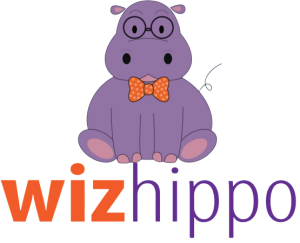
Creating an inclusive classroom where children feel valued, accepted, and celebrated for their differences is essential in early education. As young learners develop their sense of identity, early childhood educators play a crucial role in shaping their understanding of diversity and inclusion. By promoting an inclusive environment, teachers can help children learn to appreciate and respect the unique qualities of their peers, fostering empathy, kindness, and cooperation.
In this blog, we’ll explore strategies for promoting diversity and inclusion in early childhood classrooms. These strategies aim to create a welcoming environment that embraces differences in culture, language, abilities, and family structures, helping children develop a positive view of diversity.
The Importance of Inclusion in Early Childhood Education
Inclusive education benefits all children by providing a space where everyone is encouraged to participate, regardless of their background, abilities, or experiences. In an inclusive classroom, children learn to value diversity, build social and emotional skills, and develop a sense of belonging. Inclusion also supports equity, ensuring that all children have equal access to learning opportunities.
Key benefits of an inclusive classroom include:
- Enhanced Social-Emotional Development: Children in inclusive environments learn to interact with peers from diverse backgrounds, helping them develop empathy, compassion, and social skills.
- Increased Awareness and Respect for Differences: Exposure to diverse perspectives and experiences teaches children to appreciate differences and to challenge stereotypes and biases.
- Fostering a Sense of Belonging: When children see themselves represented in the classroom, they feel valued and included, which boosts self-esteem and encourages participation.
Strategies for Promoting Diversity and Inclusion in the Classroom
To build an inclusive classroom, educators must intentionally create an environment that celebrates differences and teaches children to embrace diversity. Here are some effective strategies for fostering inclusion in early childhood education:
1. Incorporate Diverse Materials and Resources
The materials used in the classroom should reflect the diversity of the world. By including books, toys, and resources that represent different cultures, languages, abilities, and family structures, educators can help children see diversity as a normal and positive part of life.
- Books: Choose books that feature characters from diverse backgrounds, including different races, cultures, abilities, and family structures. These stories should provide positive representations of diversity, allowing children to see themselves and others in the pages.
- Toys and Puzzles: Incorporate toys, dolls, and puzzles that represent a variety of skin tones, abilities, and cultural backgrounds. For example, use dolls with different skin colors, a wheelchair, or adaptive devices to encourage children to play with inclusive figures.
- Art and Music: Introduce art materials and music that reflect different cultures. Use multicultural crayons, paints, and instruments to give children the tools to express themselves through a diverse range of artistic mediums.
- Tip: Regularly update classroom materials to include diverse voices and perspectives, ensuring that children are exposed to a wide variety of experiences.
2. Create an Inclusive Physical Environment
The physical layout and design of the classroom can contribute to a sense of inclusion. Ensure that the classroom is accessible to all children, regardless of their abilities or needs. This includes making sure that children with physical disabilities can navigate the space and that learning areas are set up to accommodate different sensory needs.
- Accessible Layout: Ensure that the classroom is organized so that all children can access materials, play areas, and learning centers without barriers. Make sure pathways are wide enough for mobility devices and that furniture is adjustable to suit children of all abilities.
- Sensory-Friendly Spaces: Create quiet, cozy corners or sensory-friendly areas where children can retreat if they feel overwhelmed. These spaces can include soft lighting, calming textures, and noise-canceling options to support children with sensory sensitivities.
- Tip: Involve children in creating the classroom environment. Ask for their input on what makes them feel comfortable, safe, and included in the space.
3. Celebrate Cultural and Religious Holidays
One way to teach children about diversity is by celebrating a variety of cultural and religious holidays throughout the year. By honoring different traditions and customs, educators can introduce children to the rich tapestry of global cultures and foster a greater understanding of the world.
- Multicultural Celebrations: Plan lessons and activities around holidays from different cultures, such as Diwali, Chinese New Year, Hanukkah, and Eid. Share stories, foods, music, and customs associated with these celebrations to help children learn about cultural traditions.
- Inclusive Holiday Discussions: Encourage children to share their family’s traditions and celebrations, allowing them to take pride in their cultural heritage while teaching their peers about different customs.
- Tip: Ensure that all celebrations are approached with respect and authenticity. Invite guest speakers, such as parents or community members, to share their experiences and enrich the learning experience.
4. Model Inclusive Language and Behavior
Children learn by observing the behaviors and attitudes of adults. Educators must model inclusive language and behavior to create a classroom culture that values diversity. This means using respectful language, promoting kindness and cooperation, and addressing any incidents of exclusion or bias promptly.
- Use Inclusive Language: Use language that is gender-neutral and respectful of diverse family structures. For example, instead of saying “mom and dad,” use “family” or “caregiver” to acknowledge that families come in many forms.
- Address Bias and Stereotypes: When children express biases or stereotypes, address them in a calm and educational manner. Help children understand why certain statements or actions may be hurtful and guide them toward more inclusive behaviors.
- Tip: Encourage children to express themselves and share their unique experiences while reminding them to respect the differences of their peers.
5. Teach Empathy and Social Skills
Inclusion goes hand-in-hand with social-emotional learning. Teaching children to understand and respect the feelings of others is essential for fostering an inclusive classroom. Activities that focus on building empathy, communication, and conflict resolution skills can help children learn to navigate social relationships in a positive and inclusive way.
- Role-Playing: Use role-playing activities to help children practice empathy and perspective-taking. For example, ask children to role-play how they would feel if they were left out of a game, then discuss ways to include others in play.
- Books About Empathy: Read books that focus on feelings, emotions, and understanding others. Use these stories as conversation starters to discuss how children can support their peers and practice kindness.
- Tip: Incorporate daily opportunities for children to practice cooperation and teamwork, such as group projects, circle time discussions, and peer learning activities.
6. Foster Open Conversations About Differences
Encouraging open conversations about differences is an important part of teaching children to embrace diversity. Children are naturally curious and may ask questions about race, culture, gender, or disability. Educators should create a safe space where children feel comfortable asking questions and where differences are discussed in a positive and respectful way.
- Open Discussions: When a child notices a difference in a peer, such as skin color or the use of a wheelchair, engage in an open and age-appropriate discussion. Emphasize that differences are what make people unique and that diversity is something to be celebrated.
- Encourage Questions: Invite children to ask questions about different cultures, languages, and abilities, and use these moments as teaching opportunities to promote understanding and inclusion.
- Tip: Use inclusive books, videos, and lessons to introduce discussions on diversity, and be prepared to address difficult topics like prejudice or exclusion when they arise.
How Daycare Management Systems Like WizHippo Can Support Inclusion
Daycare management systems like WizHippo can play an essential role in creating an inclusive classroom by helping teachers and administrators stay organized and track each child’s individual needs. Here’s how WizHippo can support your inclusion efforts:
- Tracking Individual Learning Plans: WizHippo allows educators to create and track individualized learning plans for each child, ensuring that children with diverse needs receive the support they require.
- Communication with Families: Regular communication with families is key to fostering an inclusive environment. WizHippo’s parent portal allows teachers to send updates, share progress reports, and receive feedback from parents about their child’s experiences in the classroom.
- Inclusive Activity Planning: Teachers can use WizHippo to plan and document inclusive activities that celebrate diversity and teach children about different cultures, abilities, and family structures.
By integrating daycare management tools into your classroom, you can create a more organized and inclusive environment where every child feels valued.
Conclusion
Building an inclusive classroom is about more than just celebrating differences—it’s about creating a space where every child feels seen, heard, and respected. By incorporating diverse materials, modeling inclusive behavior, celebrating cultural traditions, and fostering open conversations, educators can help young learners develop a positive view of diversity and empathy for others.
With the support of daycare management systems like WizHippo, teachers can better organize inclusive activities, track individual learning needs, and maintain open communication with families, ensuring that the classroom is a welcoming space for all.
Ready to build a more inclusive classroom? Visit WizHippo today to learn how our platform can help you create a supportive and diverse learning environment for every child.

Stay Updated with the Latest in Daycare Management!
Subscribe to our newsletter to receive expert tips, industry news, and special offers straight to your inbox. Plus, get exclusive access to free resources and guides to help you streamline your childcare operations.
